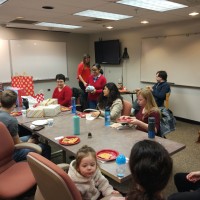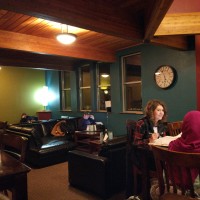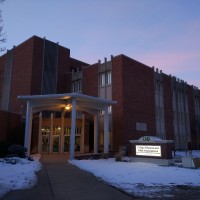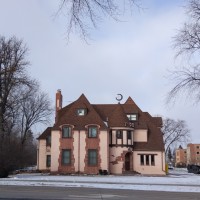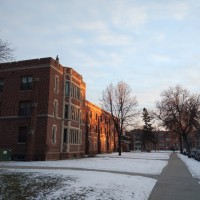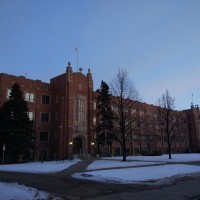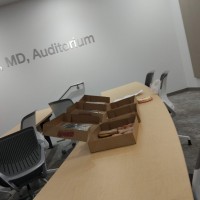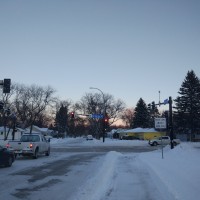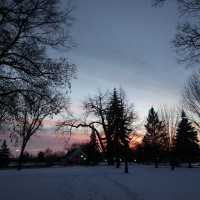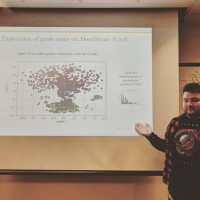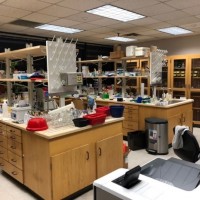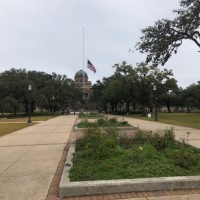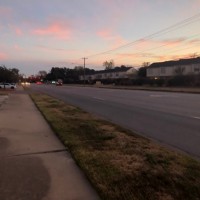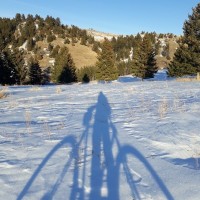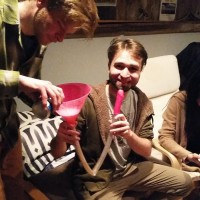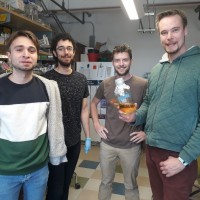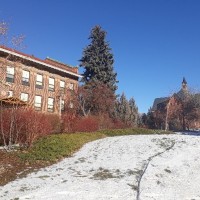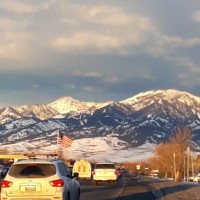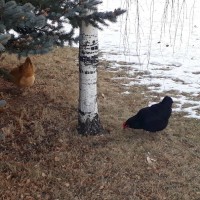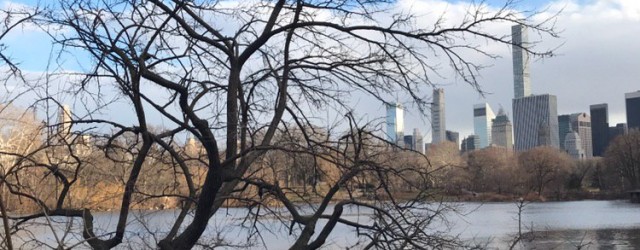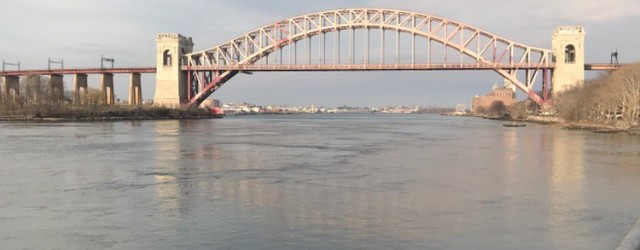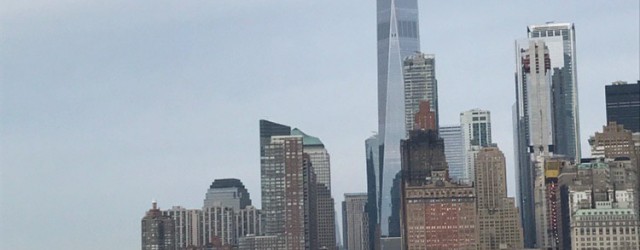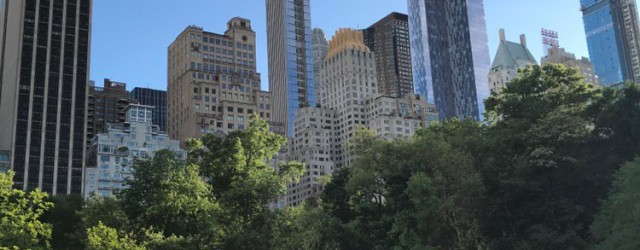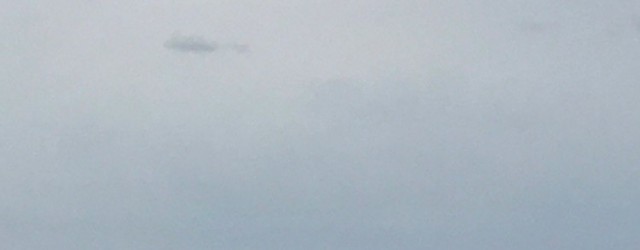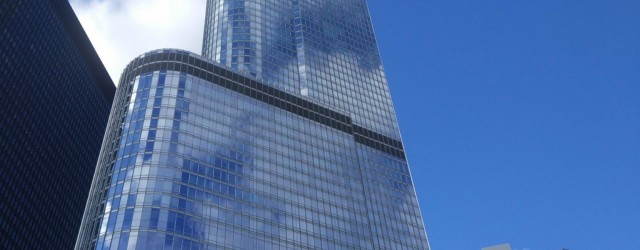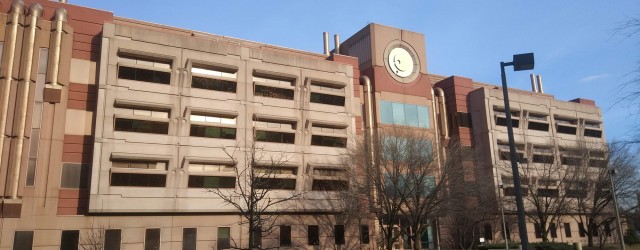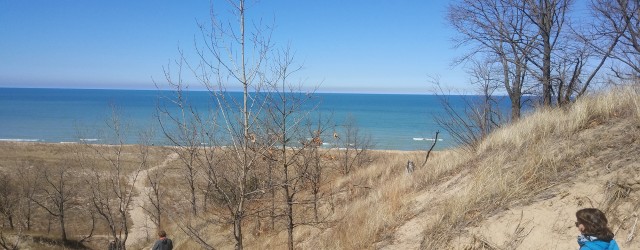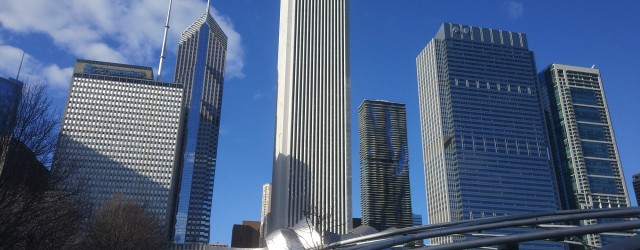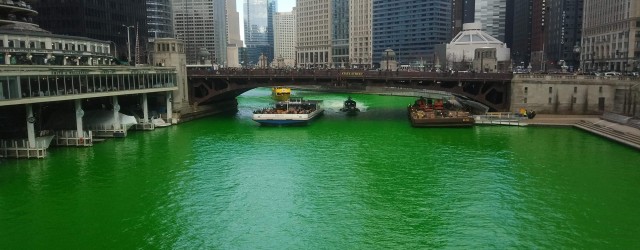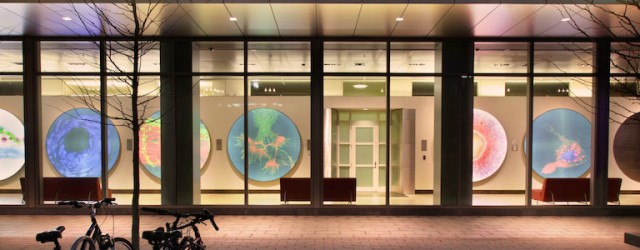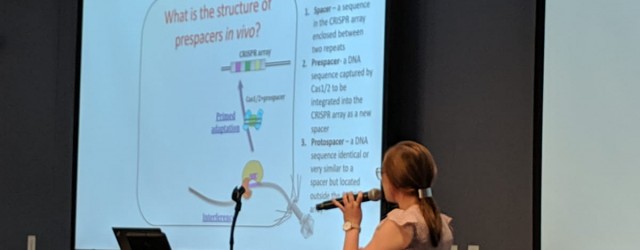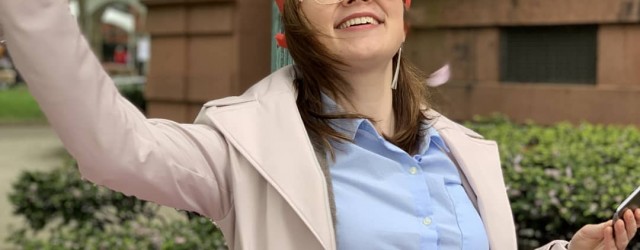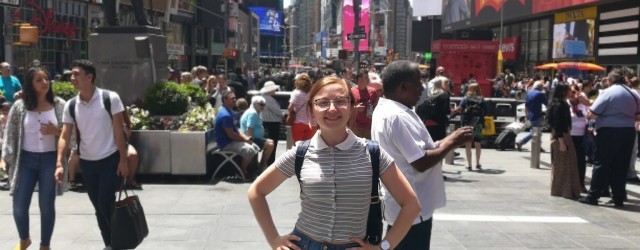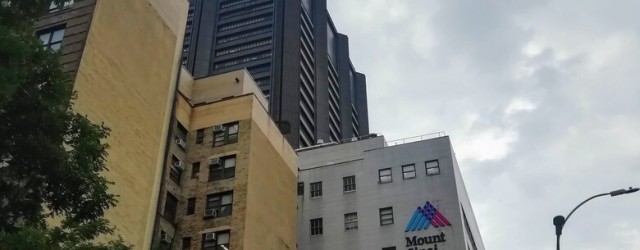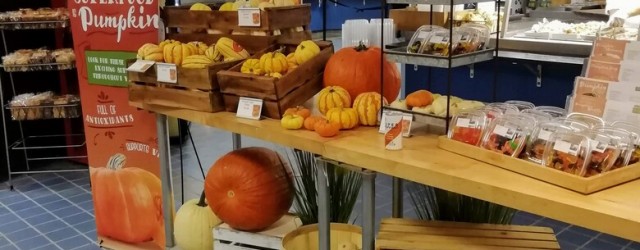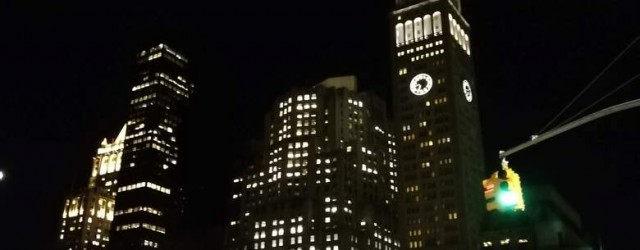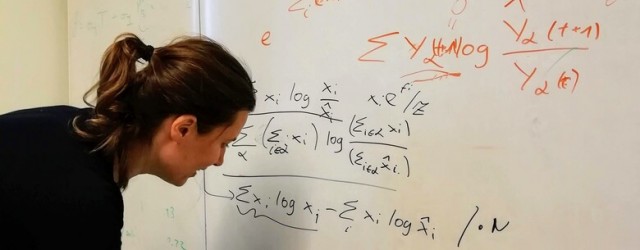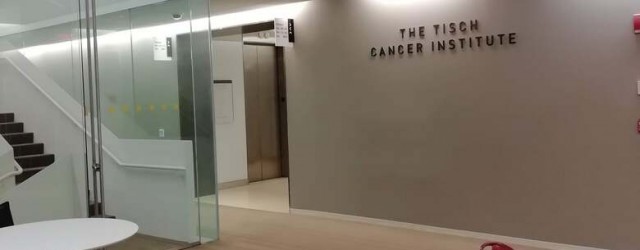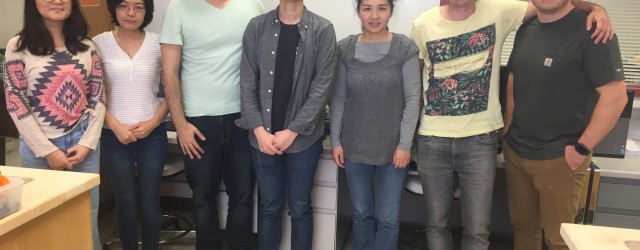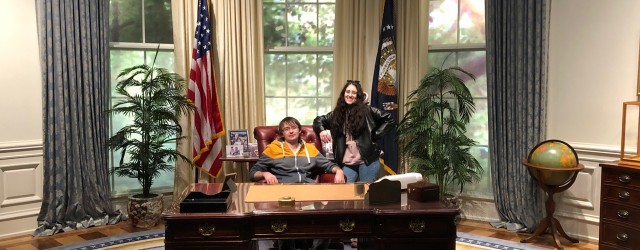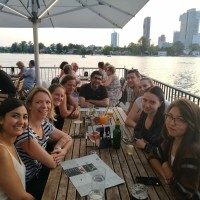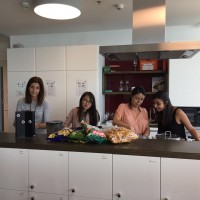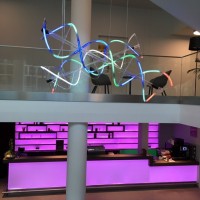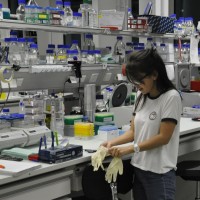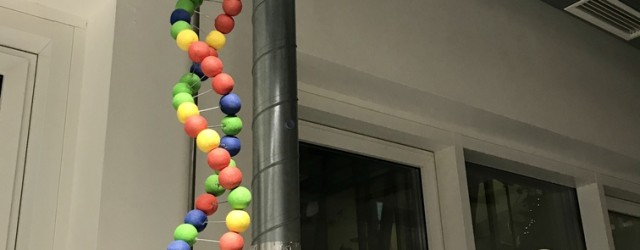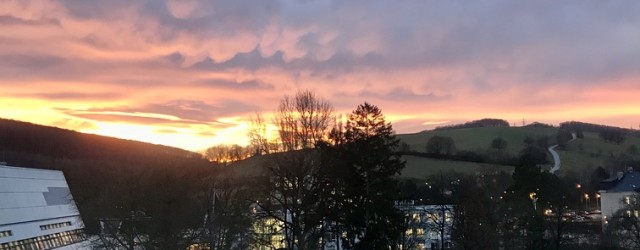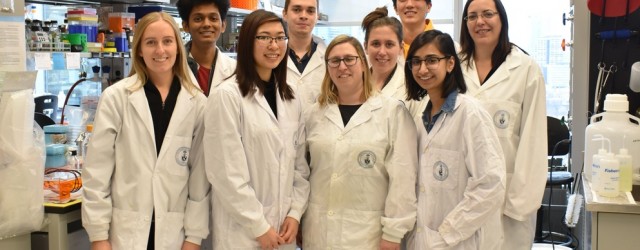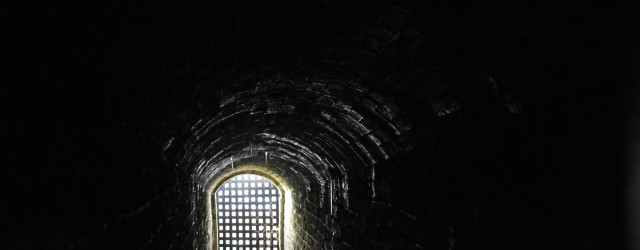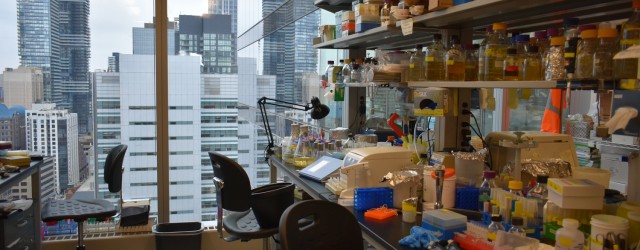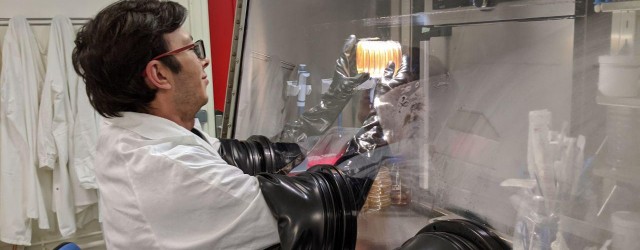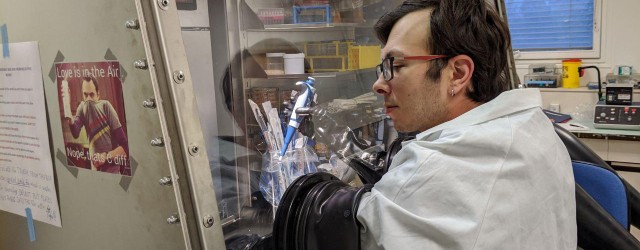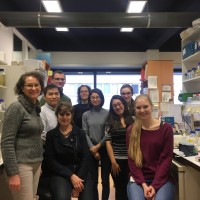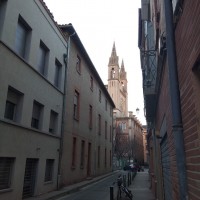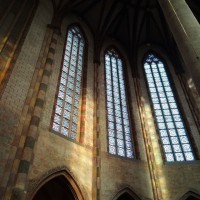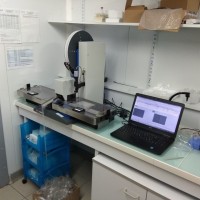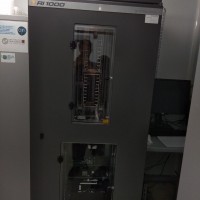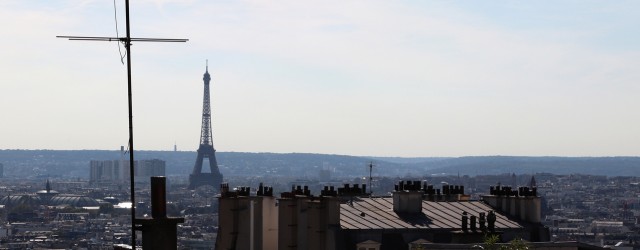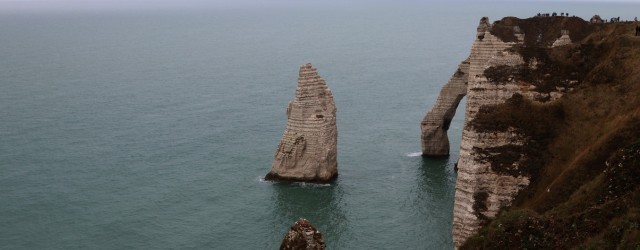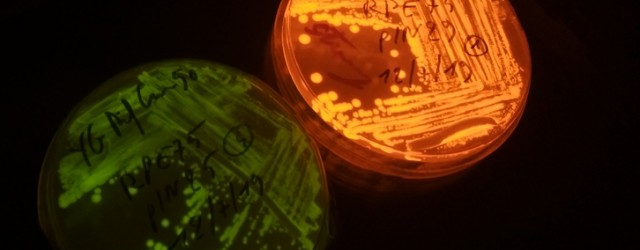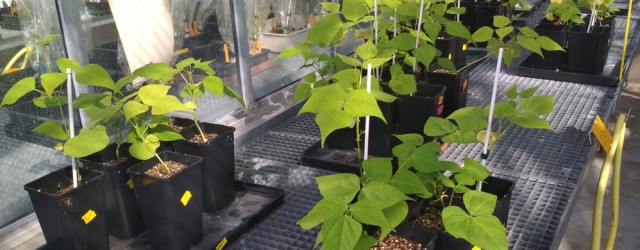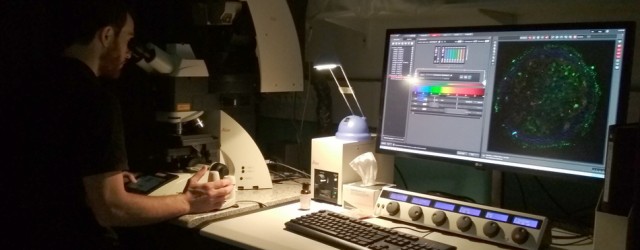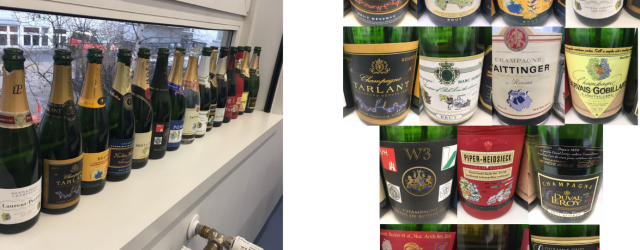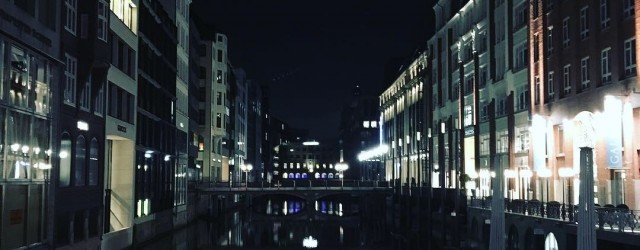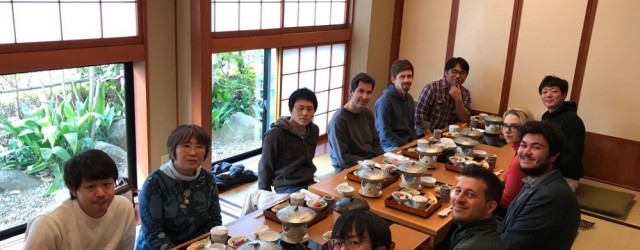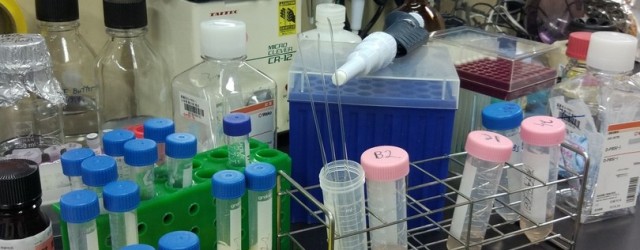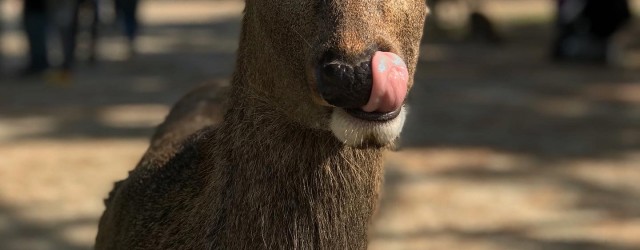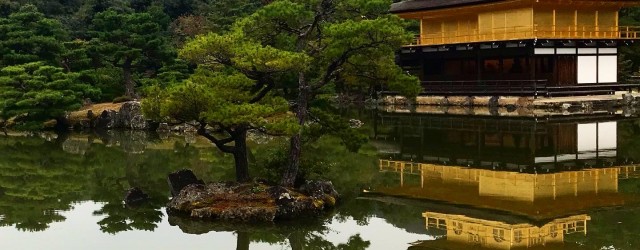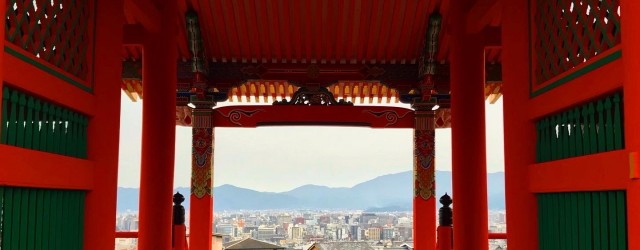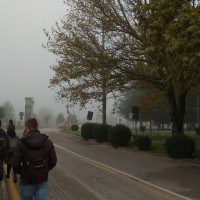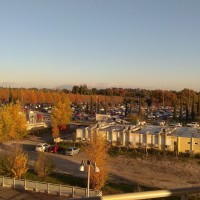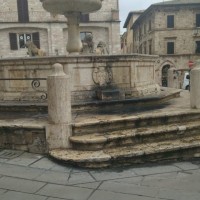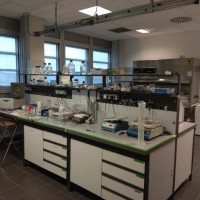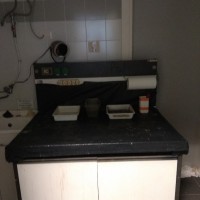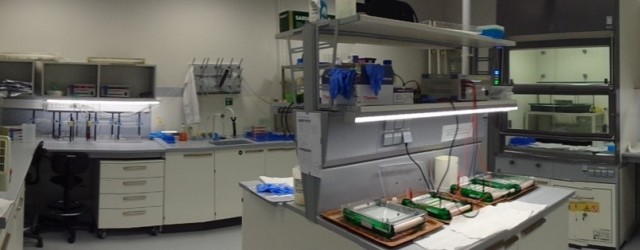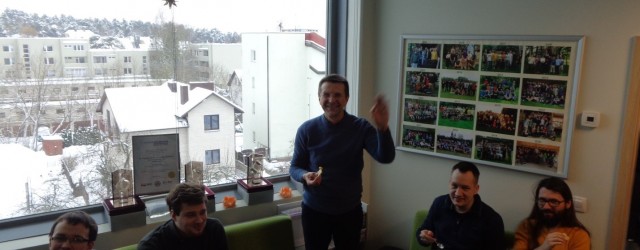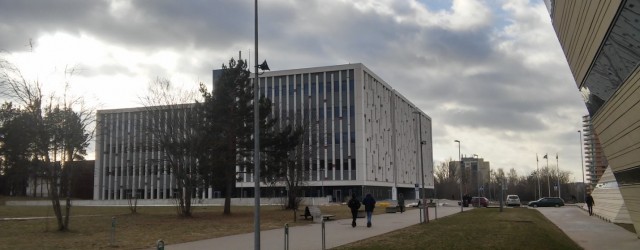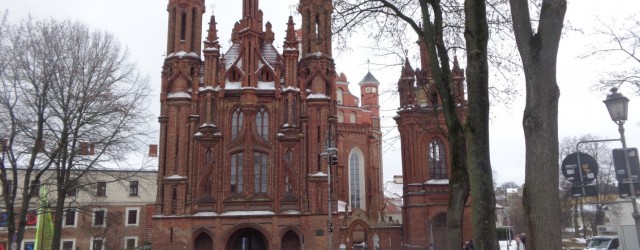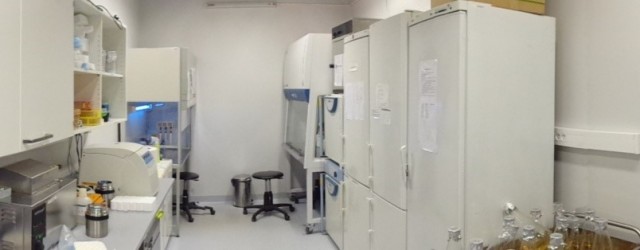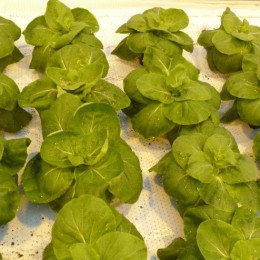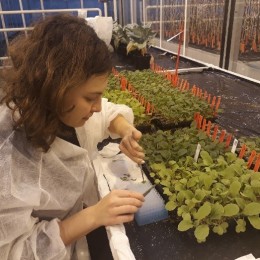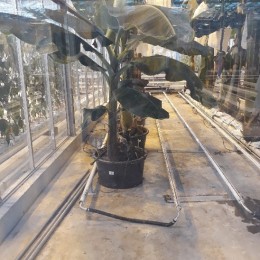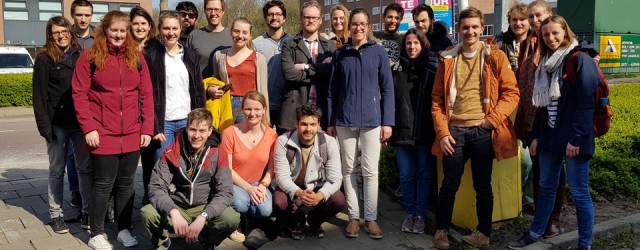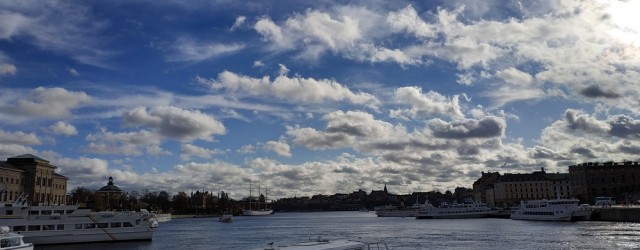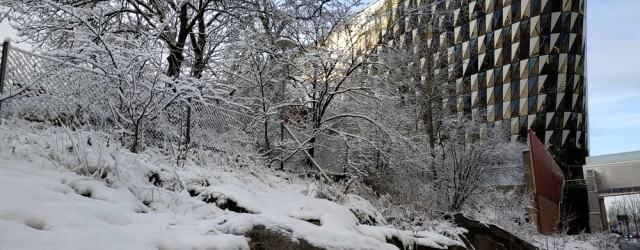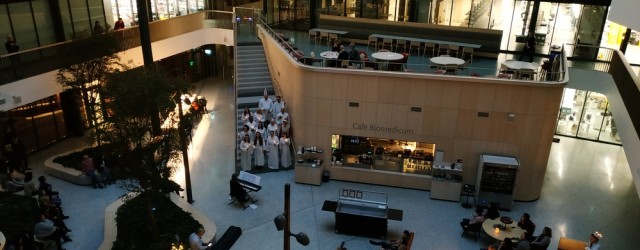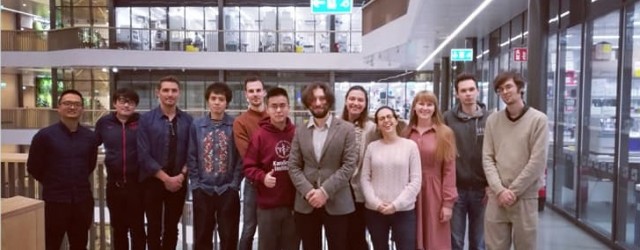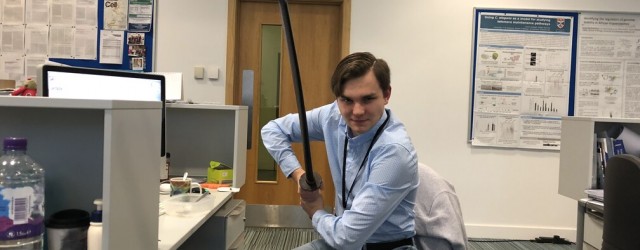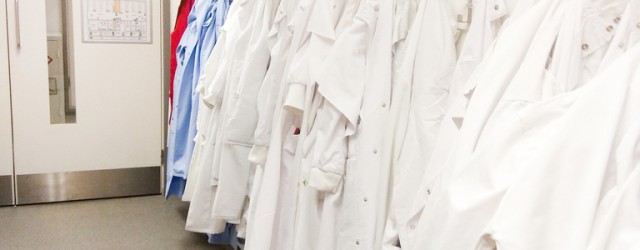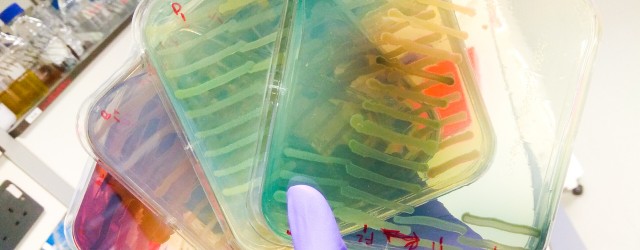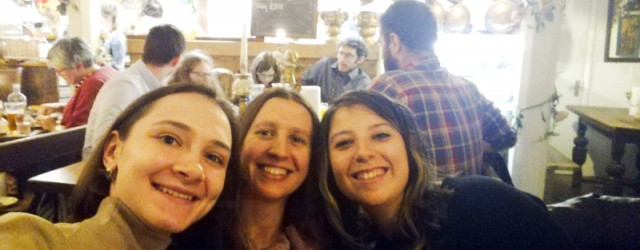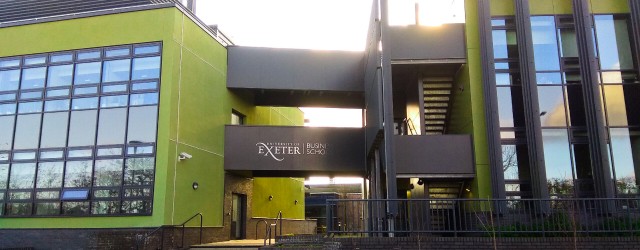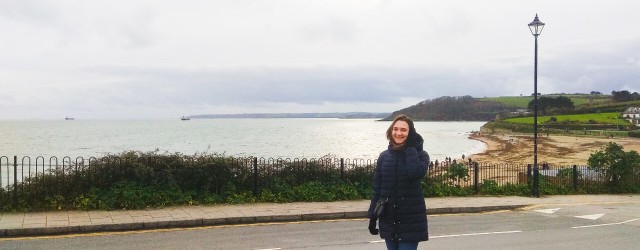Students Academic Mobility stories
The Life Sciences educational program supports Masters and PhD students academic mobility both inside and outside Russia. Academic mobility research is performed as part of thesis research and is carried under the supervision of Skoltech faculty and co-supervision by the academic mobility host. Some examples of academic mobility placements and projects are listed below.

During my mobility program I am doing research in University of North Dakota (UND). It is located in United States, North Dakota, in Grand Forks. I am studying the regulation of transcription cycle in eukaryotes at the early stages. The laboratory I am working at employs nascent RNA sequencing method, providing a great opportunity to study the stages of transcription by mapping active RNA polymerase positions with a single nucleotide resolution.
There are many international students in the lab.Most of them are Indian, there are also people from France and several African countries. The atmosphere is nice and friendly, everyone is glad to help you and ask you for some help, too.
The international lab members often get together to celebrate birthdays and national holidays.
UND campus covers about 1/7 area of Grand Forks. There are fifteen thousand students in the university, with town population being only about 50 thousand people.
The campus has many nice places to study and work outside the lab: several libraries, cafes and auditoriums, accessible for students at any time of day.
Personally, I am fond of the architecture of the campus: the warm colored halls sometimes resemble castles.
Still, the place feels very American. For example, it’s mandatory for graduate students association to bring a couple of boxes of donuts to faculty lectures. Looks like it’s considered to make people come to the lectures. Also, people here are very proud of the university and its local hockey team. It is possible to buy literally anything with its logo in a bookstore in campus. Yes, that is the BOOKstore in the picture.
The climate is very alike to Moscow. With slightly stronger winds and lower temperature. But in small town it is easier to enjoy nature, which is beautiful here .
NCBI is among the largest Bioinformatics research centers in the world and has probably the largest collection of biological data humankind gathered so far. It is a part of National Institutes of Health – main US federal agency responsible for biomedical and public health research. My supervisor at NCBI is the Group’s leader, Dr. Eugene Koonin, one of the most cited researchers of Russian origin, the author of “Logic of Chance” – the best selling book on the theory of evolution.
During the internship I am working on constructing a Machine Learning-powered approach to look for defense islands in bacterial genomes. I use various supervised and unsupervised models to build up towards a more-less general solution for that task potentially working as an algorythm. The data I use are diverse, ranging from a set of annotated genomes to protein sequences with various kinds of metadata. The only equipment I need for my work is considerable computational power to train the models and that is exactly what is easily available at NCBI: the servers and machines with powerful GPUs are the best one can dreamof.
I really enjoy working in this lab, it is both inspiring and challenging, the way research is organized here balances well the freedom of scientific inquiry and the necessity of getting things actually done. I’m really grateful to all of my colleagues and supervisors both at NCBI and at Skoltech for their advice, help and the overall attitude towards doing the best job we can.
I am the 2nd year master student at Skoltech. I work in the science centre “Nonabio” and the goal of my project is to study how bacteriophages overcome the protective system of bacteria. During this project, I have the opportunity to work in Dr. Zeng lab in Texas A&M University. This university is one of the biggest in the US and has a long history There is also a town nearby College Station . This is an interesting town as it literally appeared from the university, attracting both students and workforce to settle around. . There is also a very interesting library on the territory of this university – George Bush library where he has been recently buried. The significant advantage that I can work in the lab for 24 hours and also on the weekend, and it helps to do more and more experiments.
I’m living in Highland Park, NJ – the small town near Rutgers University. On weekends and holidays I’m trying to explore NY and NJ together with native speakers. I celebrated Thanksgiving day, Christmas and New Year in a good company of new American friends.
In our Lab we have 23 members and it is really an International Lab, because 23 people presented by 13 nationalities. We have 6 graduated students (including me) and 5 undergraduate students (not presented in photo, because they are not lab members). Ilya Raskin Laboratory belongs to Plant Biology department of Rutgers University and is the basis for GIBEX Institute (Global Institute of BioEXploration). My project is about searching the plant antimicrobial compounds from edible and medicinal plants. The Lab is fully equipped for conducting any research connected with plant and cell biology.
I traveled to the United States for the first time, which was quite an unusual experience, especially since I lived there for six weeks. Chicago is located on the shore of one of the Great Lakes, particularly, Lake Michigan, which is so huge that it looks like an entire sea. I really enjoyed bike riding along the lake shore. I also found time to travel to Boston on weekends and visited Manhattan during a twelve-hour stop on my flight home. Thus, I could see how diverse America is in different parts of the country.
I believe that, the mobility program at Skoltech is a great opportunity to get valuable professional knowledge and international experience, as well as to compare how science works in different parts of the world, and certainly to have fun.
I was lucky to work in MIT for 11 months. I lived in Somerville, at an 11-minute bike ride from the lab, a luxury that is impossible in Moscow, for the time being at least. To make most of my stay, I worked very hard, spending most of my time in the lab, but I also took the time to visit some of the important places in Boston such as the Harvard Arboretum, the Museum of Science and of course, I made a few trips to Cape Cod to spend time on the beach.
A lab is like a kitchen, so it does not take too much time to find the logical places where things are kept. I easily adapted to the Anderson lab and benefited highly from the trainings offered in the institute. However, wherever I go, the most important thing for me is the people that surround me. I especially appreciated the level of energy: everyone is very focused and they work hard. It’s very stimulating when you see all the good results around you, even those acquired through sweat and tears! I made a few friends there, and I miss them already.
On the scientific side, the few months I spent in MIT were very fruitful. I obtained some important results for my PhD projects, and I was able to perform some experiments for other projects of Dr Zatsepin’s lab.
Overall, I would definitely recommend Academic mobility, provided that the project is well designed to take advantage of it, because any experience in another country, another culture, another lab for that matter, is the equivalent of seeing life from another angle. It gives perspective, it makes you grow, and it challenges you to push yourself beyond what you think you can do.
For almost a year and a half I’ve been working on my PhD at Rutgers University in the USA. Rutgers is a huge public university with more than 60 thousand students enrolled (to compare: there are about 40 thousand students at Moscow State University). Rutgers has a wide-spread presence in the state of New Jersey with the largest campus located in New Brunswick . The New Brunswick campus is further divided into five small sub-campuses including the Busch Campus where I have been doing my research at Waksman Institute of Microbiology under the supervision of Prof. Konstantin Severinov and Prof. Bryce Nickels. During my trip, I’ve been studying CRISPR-Cas systems, the adaptive immune systems of prokaryotes.
In short, bacteria are able to keep memories of viruses they fought by inserting short pieces of viral DNA, spacers, into the bacteria’s own genome. These memories ensure that if the bacteria get infected by the same virus again the cells “know” how to vanquish their enemy. We were trying to understand how the memories are generated by analyzing sequences of spacers incorporated into bacterial genomes and sequences of short DNA fragments preceding spacers, prespacers, that float in cytoplasm before they get inserted into a chromosome. We have described a typical prespacer in two types of CRISPR-Cas systems and our paper reporting these results is currently under review. So, as far as science is concerned, I think my trip has been very successful so far. And I really enjoy working at Waksman Institute for multiple reasons. Firstly, the people have really gone out of their way to help me! Furthermore, I am impressed by how well everything is organized here, whether it be lab supply orders or waste disposal. In addition, there are small events like “tea time” every two weeks when the whole institute gets together to have some cookies, coffee and tea. There are also bigger events like picnics or Christmas parties. I think all these events make the atmosphere more friendly and less formal which goes a long way to creating a very pleasant working experience that I found in the institute.
There are several public holidays in the USA. They are often on Mondays so you have long weekends and can use this time to go on a short trip. I have visited several places in the US like New York; Washington, D.C.; Orlando and the Tampa Bay Area in Florida; Las Vegas and the surrounding fantastic neighborhoods in Nevada and Arizona. I went to a classical music concert in Princeton and listened to a Grammy-winning gospel choir in Brooklyn. I was trick-or-treating on Halloween and was running away from zombies at a “haunted” cornfield. I was eating turkey on Thanksgiving and was belly dancing at Arabic parties. There were so many events! I am so happy I got to experience all of this! Even though organizing the trip, getting a visa and looking for a place to stay might be frustrating, the experience you gain is totally worth it!
Three months ago, I came to Mount Sinai to work on my current project on predicting the evolution of influenza virus which will hopefully become a part of my PhD thesis. When I just arrived, I’ve faced some troubles with commuting because NYC is huge and living there is expensive but a month ago, Sinai provided me with a place at the student housing which made my life much easier. I like NYC and people living there – they are mostly extremely kind, helpful, and patient which goes beyond price given how different life in the US is and how frequently I am asking to explain things to me.
My current supervisor Marta Łuksza and I first met last July at the SMBE2018 conference in Yokohama. Marta has been working on influenza fitness models for several years, and she currently consults the WHO during the sessions on flu vaccine strains selection which occur twice a year. During my second PhD year, my project got stuck – I couldn’t produce the results I’d be satisfied with and I kept complicating my model further and further with no actual success. When I came to Marta, we started to revise my model from the very beginning and I suddenly succeeded in solving a technical but pretty fundamental issue that I wasn’t able to solve when I only started the project and after which I started to increase the complexity of my model. So now I’ve been rebuilding a much simpler version of my model constantly consulting Marta on different issues. Unfortunately, I still don’t know if it’s going to succeed in the end but I treasure a lot the experience of working with Marta and rethinking my work from a very different angle.
Particularly, we are trying to estimate how the concentration ratio of these enzymes affects the level of protection against phages.
At Dr. Zeng lab of A&M University I have a unique opportunity to study the degradation of phage DNA in bacteria cells under the action of restriction endonuclease using the fluorescence microscopy.
Everybody in Texas and in the lab are very friendly and ready to help. Texas A&M University’s buildings are surrounded by trees and squirrels run around the campus, you feel like walking in the park. On Christmas Eve, the small residential areas around the university look very nice. The whole atmosphere is calm and allowing you to focus on your work.
I ам a second-year Master student of “Life Science” program. My academic mobility internship is going on in the Vienna Biocenter (VBC), Austria. This huge center includes four research institutes and several biotechnology companies. Together with Rushad Pavri group from Institute of Molecular Pathology, we are trying to reveal some features of the latest stages of antibody diversification regulation/ In other words, to answer the question what mechanisms make AID-dependent mutations so specific to immunoglobulins loci. I should say, the atmosphere in the lab, as well as in the whole institute, is highly supportive, comfortable and inspiring, which makes the process of scientific work much more engaging.
The first thing, which I noticed was a very intensive collaboration between research groups. Even though each of them works on completely different research problems, a collaboration between groups, multiple discussions and meetings often lead to new ideas, giving a fresh view on your project. And such VBC tradition like a “Beer hour” every Friday at 17:00 significantly facilitates fruitful networking :D. Another notable feature of VBC is it’s infrastructure and a variety of different facilities with most advanced equipment: NGS, Advanced microscopy, electron microscopy, metabolomics, histopathology, and other facilities, usage of which is available for all groups, after passing an appropriate training. Every week the institute invites outstanding scientists to give a talk or seminar. And almost every research they tell us about is a high quality work with a portion of scientific romantics, full of struggling and pain, but at the end turning into a beautiful story. How is that possible not be fascinated by that?
On my academic mobility, I am working at IST Austria in the lab of Fyodor Kondrashov. IST is located on the outskirts of Vienna, in a beautiful area on the hills (so I got used to some casual everyday hiking). As for my research, I am using experimental methods to test our hypothesis on how epistasis shapes protein evolution. To achieve this, I’m going to perform experiments on yeasts – which is quite challenging and engaging for me considering that my previous experience was mostly bioinformatics.
The people in the lab are great and super-supportive, teaching me how to deal with yeasts and the whole wet lab arrangement, and giving great advice on my project. The lab meetings are interesting and productive and allow getting to know various projects people are working on. Besides, IST regularly organizes lectures of scientists from different fields, and I’ve already attended some of such talks. I was also lucky to ‘catch’ Christmas time in Vienna, with its famous Christmas markets, decorations, and festive atmosphere.
Here’s one of the advantages of going to a good conference – you may hear about an interesting method potentially applicable to your project and the very same day arrange an internship to try it. That’s how I turned out to spend one month at the University of Toronto in Karen Maxwell group.
Toronto is the biggest city of Canada and it is very multicultural; apart from the common Chinatown there are districts like Little Italy, India or Korea. Even in our small group there were people from 5 countries. Toronto forms a vast agglomeration that surrounds the western coast of one of the American Great Lakes – Ontario. I’ve spent most of the time in the down-town area with numerous skyscrapers. Unlike most of the USA where down-town is usually a business district, in Toronto it is used for housing, so it felt very lively. My lab was located in the glass skyscraper on the 16th floor and there was an amazing view on the town from my workbench.
As for me, an important part of the internship was to see how the lab functions and to compare the organization of work process with our own. I must admit that a really big thing, is to have a good lab technician – a person that can assist anyone with obtaining the final picture for the article and helps new students to quickly get involved in the workflow. Also, they have a good practice of rotation – all master students spent a couple of weeks in 3 different labs and only after that they choose the project they are going to work on.
Besides science, I also had some time for sightseeing. Toronto itself has quite interesting museums and art galleries, for example, I was lucky to get to the exhibition of Rubens. The biggest attraction in the area is the Niagara Falls, that I visited in the middle of the freezing rain – at the temperature below 0 rain drops can form a thin film of ice, immediately after touching the ground. So, all the buildings and trees around were covered with ice, which made a really beautiful scenery. While the bus ride in Canada can cost almost like a plane ticket I still spend a weekend in Kingston and Ottawa, which also has a bit of beautiful neo-gothic architecture.
The goal of my visit was to examine whether the presence of the defense system BREX may directly affect the injection of the phage DNA and by the end of the mobility I’ve got an answer to this question. So, I may consider this internship to be fortunate both from the scientific and cultural points of view.
My name is Anton Shkaruta, I am a second-year Master student in Life Sciences program at Skolkovo Institute of Science and Technology. I am working under the supervision of Professor Konstantin Severinov. My project aims to identify the phage genes, which inhibit CRISPR-Cas system in Clostridioides difficile.
Because of this project and the academic mobility program at Skoltech, I got a wonderful opportunity to go to France. Here I work with the scientific group of Professor Olga Soutourina, located in Institute of Integrative Biology of the Cell (I2BC), University Paris-Saclay in the countryside of Paris. They specialize in C. difficile and spent the last few years studying CRISPR-Cas system subtype I-B in C. difficile Professor Soutourina and her group are very professional and friendly. They helped me to accommodate (it was very unfamiliar to work in the anaerobic chamber) and get really very interesting results in my experiment.
The countryside of Paris is the place of forests, parks and small houses; it looks as though you’ve walked straight into a postcard or a fairy tale. People on the streets here are all smiling and friendly, always ready to help, though most of them are not used to work hard. First Sunday there, I thought that apocalypse has happened, everything is closed and no single soul on the street. Paris itself is lovely, and as for me, it looked very familiar, because I grew up in St. Petersburg. Though, I did not have too much time to visit Paris, as I spent every day, including many weekends in the lab.
The one very good thing about being in the middle of western Europe is that you can buy a roundtrip bus ticket to other European countries for 30-50 euros. I already spent one weekend in Amsterdam and I am planning to visit Germany, Belgium, Austria, and maybe Spain during my mobility.
I am a second-year master student. My current supervisor is Konstantin Severinov and I work in Institute of Gene Biology RAS. During my thesis project work I had an internship in Institute of Pasteur (Paris, France) under the leadership of Dr. Krupovic (Molecular Biology of Gene in Extremophiles Laboratory, Department of Microbiology).
The main research axis of this team is studying viruses of hyperthermophilic bacteria and archaea. These viruses are diverse and have many unique features, setting new challenges for fundamental studies. Moreover, it is necessary to explore these highly stable viruses to probably harness them in biotechnology. The Pasteur Institute is one of the world’s leading research centers with a great history. I was very lucky to have such an experience in the extremely friendly and inspiring surrounding. I am very grateful to the team for sharing their skills, knowledge and providing me a wonderful opportunity to work together.
My name is Eldar Yagmurov, I am a second-year master student of Skoltech’s Life Science program. As a mandatory part of Skoltech’s master program, I am completing my thesis project under the supervision of Prof. Konstantin Severinov. I am investigating the Microcin C (McC) – producing cluster from Hyalangium minutum. In my thesis, I have managed to study and validate the mechanisms of McC production from H. minutum mcc cluster. The most exciting part of my project was the discovery of H. minutum self-immunity protein, which is able to inactivate McC and McC-like compounds. To understand the mechanisms and structure of McC inactivating protein from H. minutum, I had to complete an internship in the laboratory with powerful analytical facilities. So, I travelled to France to complete my mobility program under the supervision of Prof. Guy Lippens, in the Laboratoire d’Ingénierie des Systèmes Biologiques et des Procédés (LISBP), Toulouse. LISBP is a an un-to-date and well-equipped laboratory running a diverse range of cutting-edge research projects, ranging from metabolomics projects to the projects aimed at improving agriculture worldwide.
My internship in Toulouse is very important for me not only from the scientific point of view but also from invaluable life experience I got here. I have never lived in Europe longer than for a week, and I must admit that this is one of the best experiences of my life. I find France and its people to be very open-minded, warm and kind-hearted. Every morning on my route to the lab, I hear “Bonjour! Ça va?” from complete strangers; when I have difficulties finding my ways around the city I never hear “no” as an answer/ Instead people are eager to help. I was even once given a croissant for free in the local boulangerie, which was very nice since the pastry here is magnificent. To add more to the food topic, I had a very unexpected discovery, while always holding some prejudice towards cheese, here, I realized that I am in love with it. Another surprising aspect of France is that people here cherish nature around themselves, they stay close to it and try their best not to harm it. French are famous for their relaxed pace of life void of rush and hurry, and, from my point of view, Toulouse is one of the best cities to experience the typical French way of life. The city is filled with beautiful architecture, numerous street cafes, the wonderful scent of freshly baked pastry, medieval streets and squares, and, of course, the warm weather of the south of France. You can even see the Pyrenees on a clear day. Not to mention the beautiful language people speak here, which I have the pleasure of practicing and improving. Overall, I find this experience to be fulfilling and exciting.
Together with Prof. Lippens and the members of his team, I investigate the catalytic mechanisms of McC inactivation by H. minutum self-immunity protein with help of Quantitative Nuclear Magnetic Resonance Spectroscopy. The technique allows for precise and real-time analysis of different biomolecules on a very small time-scale. In parallel, we are studying the crystal structure of the same protein using the x-ray diffraction method. My colleagues from LISBP, whom I am extremely grateful to, are always there to help and explain whenever I have difficulties with something. Moreover, the lab has a very cozy tradition of having lunch together, this gives an opportunity to discuss our projects and usually get helpful insights and comments.
In conclusion, I want to say that my mobility in LISBP, Toulouse is a very important chapter of my life. Not only it allows me to see how a world-renowned laboratory works and establish useful network connections; it also allows me to broaden my horizons and to see the world differently. I am extremely grateful to Skoltech and my research advisors for providing me with such a great opportunity to pursue the mobility program in France.
During September-October of 2019, I was on academic mobility in the Institute of Integrative Biology of the Cell (I2BC) in Gif-sur-Yvette (France). The laboratory of Dr. Peter Mergaert I was working in, studies plant- and insect-microbial interactions with the special focus on several model systems of the nodule-forming rhizobia. The laboratory has unique facilities for performing in planta experiments (greenhouses), which allows testing the interactions between bacteria and plants in the conditions as close to those present in real soil as possible. Moreover, several research groups located in the same building perform structural studies of various proteins at the same time. This allows to combine several different approaches for the functional characterization of the pathways involved in establishing symbiosis. I had a unique opportunity to do protein crystallization, competition assays in planta as well as genetic experiments at the same time, which made the work in I2BC especially productive.
Gif-sur-Yvette, situated 40 km to the south of Paris, is a small town surrounded by forests and fields. Working in I2BC allows living in a quiet and peaceful place while still being able to reach cultural and historical places of interest in the heart of the capital in just 30 minutes by a direct train. All north of the country is also available for visiting on weekends. During this internship, I managed to see two places I have been dreaming of: the splendid garden of Claude Monet in Giverny and St. Michael abbey in the west of Normandy, as well as several other lovely places at the shores of the English Channel.
The development of the reporter E. coli strain-pDualrep2 system opened up the possibility to screen for translational inhibitors and allowed us to identify several antibiotics, in particular tetracinomycin X (TetX). I have amassed skills and experience in executing biochemical and molecular techniques such as conducting polysome-profiling assays for disome formation in our quest to decipher the precise mechanism of action of TetX using Cryo-EM. Thus, the trpL2Ala-dicistronic system was developed in our quest to obtain disomes in preparation for Cryo-EM, since toe-printing result proved that stalling of the ribosome occur during the translational elongation. The structural data on antibiotic binding site will allow us to understand the antibiotic mechanism of action and carry out a rational optimization of the molecule, that is based on its environment within the bacterial ribosome.
The team in Professor Dr. Daniel Wilsons lab are always willing to help, intelligent and supportive throughout. The academic mobility has allowed me to interact and establish meaningful networks with other passionate and dedicated scientists fueled with the drive to combat antibiotic resistance, a present-day global challenge. One of my favorite lab traditions was the display of champagne bottles labelled with publications that the lab has accomplished. In addition, as a way of general applause, the other tradition that I found fascinating was knocking on the table instead, in particular during the seminars that is mostly university/student style. This is considered a German way to reveal the degree of enthusiasm and appreciation.
The city of Hamburg is a home to one of the biggest harbors in Europe. A stroll along its many waterways and canals is an illustration why they call it the “Venice of the North”. A beautiful city with wonderful sights such as the Merchants District (marked by its imposing red-brick architecture), couple with a great dining experience along the river. The town hall is an architects dream! The entire plaza in front of the Town Hall lends to the grandeur and visiting experience. Nearby there are many shops, restaurants, bakeries and coffee shops.
Last but not least, the whole experience would not have transpired had I not have been rendered the opportunity to conduct my academic mobility in Germany. I am indeed immensely grateful to Skoltech for such a program that fosters collaboration as it opens a room for new ideas, growth and being a citizen of the world especially for young aspiring scientists.
I was on academic mobility at Max Delbrück Center for Molecular Medicine in Berlin. Berlin is a vibrant city combining both history and modernity. There are so many museums, theatres, and clubs in Berlin that anybody would find something for himself. Scientific life at MDC was also full of events such as conferences and seminars. And I can say, I reallyenjoyed my stay in Berlin.
At the moment I arrived, de la Rosa lab was a small research group, so when I joined them I didn’t feel myself as a guest, I immediately became part and parcel of the team. We were studying insertions in immunoglobulin genes, and my part of the work was to search for insertions in Ig light chain.
In the laboratory, I studied the cell line that was obtained from the so-called “sleeping” chironomid embryos (a specie of the midge from the Chironomid family). They have an exeptional capacity to withstand severe drought. The cell line can be stored in a dry state after desiccation at room temperature for up to 251 days and can return to the physiological activity during rehydration with retaining proliferation potential.
This laboratory have developed the method for reproducing of a midge in the laboratory conditions and support its life cycle for many years based on midge’s amazing ability to stop metabolism and return to active life. So the laboratory focuses on studying the mechanisms of this process .
An interesting effect of the midge’s and cell line feature is that in the process of desiccation, genomic DNA gets fragmented through a variety of double-stranded breaks and they can lead to various genomic rearrangements at break points during DNA reparation.
In addition to working in the laboratory, my colleagues and I climbed to Mount Tsukuba, that is not so high as Mount Fuji, but you can still get tired during climbing to the top. We also visited some popular places in Tokyo, where we tasted the local cuisine and joined the local culture.
The staff of the laboratory I worked with stuck me with thier diligance and responsible approach to any issue. These, probably typically Japanise, qualities were especially noticeable in the almost round-the-clock work schedule in the laboratory, productive scientific seminars and the absence of any significant attention to the earthquakes.
I am grateful to the lab where I worked, and my supervisors for the opportunity to study such an unusual biological object, which still attracts the attention of biologists from different countries.
To solve the structure of some proteins that are involved in the modification process I went on an academic mobility to RIKEN, Yokohama. Here I work in the laboratory for Advanced Bimolecular Engineering under the supervision of Shunsuke Tagami. He was the first one to solve the structure of modification enzymes that are involved in the biosynthesis of other RiPPs type called lasso peptides. As RIKEN is the largest research institute in Japan with many campuses all around the country it has all necessary facilities for a variety of structural experiments.
The academic mobility is not only a unique opportunity to carry out my research but also a chance to discover the impressive culture of Japan. It is my first time in this country and now I feel that I’m totally in love with it. It is very beautiful, there is delicious food and amazing people. Of course, when you live here you face some difficulties. Firs of all, almost nobody speaks English outside the institute and during the first month of my stay I had to communicate using sign language only. Fortunately, RIKEN has a free Japanese course, that helped me not only to understand people but also to understand the culture of this country.
Staying in Japan I had an opportunity to work with the most modern equipment using the most recent techniques; take photos of the view on Mt. Fuji from the window in my apartments; enjoy the rhythm of modern Osaka and Tokyo; feel the spirit of ancient Kyoto; survive in the strongest typhoon in 60 years and feed tame deer in Nara.
I was very happy to catch a glance of warm and dry autumn here It was one of the best autumn in my life! Moreover, in the morning a mystical and wonderful mist, laid down on hills and trees’ crowns to vanish just in few hours disclosing tawny leaves and sunny streets . All this creates relaxed and calmed mood inside of you.
My mobility trip was to Perugia, Italy. It is a lovely place, which feels like a breath of fresh air after noisy and smoggy Moscow. There are many trees, parks and very beautiful historical buildings, which are literally everywhere.
My colleagues in a lab were very friendly and ready to help. When you come into a new environment, you feel a little bit constrained or embarrassed, but I did not feel anything like that, because of everyone helped me in case, I did not know where some reagents or equipment is. People in Italy are very friendly and always want to help you in case of need, even if you do not understand each other. Yes, it is a sad truth – if you do not know Italian, it is hard to communicate there, especially, when you are outside of touristic places and beaten tracks . On the other hand – it is a great stimulus to learn the local language.
Now, we are continuing to process the the data, obtained during experiments, especially FACS data and Western blot data. In In addition, we are going to continue with some RT-qPCR probes for further characterization of fibrosis processes inside the murine liver.As for my scientific results, we have done the histology part of work – stained the liver tissue samples for leukocytes infiltration and collagen for evaluation of fibrosis and inflammation heaviness. We performed FACS part – counted leukocytes amount in each sample and divide them into different groups (T-cells, macrophages, NK-cells etc.) for the definition if there any difference in cells type ratio or not. In addition, we performed standard molecular biology techniques like RT-qPCR and Western blot to reveal if there any changes in different proteins or RNAs expression during the fibrosis in control and GILZ-KO group or not.
Overall, it was productive time, especially due to the atmosphere, which contributes to a calm, work-centered mindset and provides the necessary rest between work sessions.
In October, 2018 I started my MSc Thesis research in Tzin lab of Ben-Gurion University in Negev. The university is located in the center of Israel and is made up of two parts – the main campus in the city Beer Sheva and another campus in the village Midreshet Ben-Gurion. The laboratory I studied in is situated in a small agricultural campus. It mainly focuses on studying of molecular plant-insect interactions. Lab members are postdoctoral fellows, Ph.D and MSc students from various countries: Israel, India, Ghana, Kazakhstan, Russia; so the main language in our lab is English. My co-advisers in Israel are Vered Tzin, a head of Tzin lab, and Hadas Zehavi, a research associate in Weizmann Institute of Science in Rehovot, Israel, who invited me to participate in a big project to study the role of authophagy in plant-insect interactions on Arabidopsis and green peach aphids. I sowed and grew Arabidopsis plants in lab conditions, infested grown plants with aphids, maintained aphid population, made choice analysis in Petri dishes and reproduced new seed for generation. These approaches are not the final part of my mobility, for the next 3 months I will conduct RT-qPCR, Western blotting, confocal microscopy and metabolite analysis to examine project hypothesis.
All the members in our lab are more than coworkers, they are a team: every 2 weeks we have a lab meeting where one of the members is talking about either an interesting article, process, or discovery in science related to our field of research. Once in a season we go to a wonderful place in Israel . Lately we have visited Yeruham park to see the crocus flowers in the desert. The Lab supervisor always keeps us informed about future conferences and workshops in Israel. We celebrate birthdays, memorable dates and festivals together. I am really grateful to my colleges for suggestions and technical support during my mobility period.
I am living in the university campus in a special dorm and it provides perfect facilities for comfortable life: sport (running, workout, boxing, football, volleyball, frisbee), dance (student’s salsa, professional salsa), performance (concerts, festivals, cultural evenings) and entertainment (pool, table tennis, table football, karaoke, hiking, choir) activities. One famous and highly illustrious festival here is the Cultural festival at the end of the year, I visited in end of December, 2018. It was an amazing concert with performances from different countries. I also enjoyed Chinese, Indian, Israeli and Russian food.
I think Ben-Gurion University in Negev is a good place for studying and research.
My name is Alena Drobiazko, and I am a second year Master student. To perform the experiments for my thesis, I went to work at the Department of Protein – DNA Interactions in Vilnius University, Lithuania under the supervision of Prof Dr Virginijus Siksnys. This lab works with enzymes. They study their structural and functional characteristics Particularly, the laboratory studies the enzyme assemblies contributing to the bacteria defence systems against viruses.
Vilnius University is one of the oldest European universities in the center of Old Town. However, the laboratory of Dr Siksnys is located in the modern building of Vilnius University Life Sciences Centre which is about half an hour ride from the Old Town. The university campus is very comfortable; there are several cafes, lots of auditoriums and a huge library to study.
My mobility lasted seven months, so I had a wonderful opportunity to observeVilnius in different seasons.
I am working with a newly discovered BREX system being one of the complex bacterial defense strategies . The project aims to confirm the predicted functions of BREX proteins individually and in complexes with other components of the system. For that, I had to obtain large amounts of purified BREX proteins and conduct different biochemical assays.
I am lucky to work with the team of Dr Siksnys in such a supporting atmosphere. People always are ready to help whenever I ask questions or bump into some problems.
You don’t have to learn Lithuanian if you want to work here, everyone in the lab speaks English, and about one third knows Russian.
The lab has a good tradition of celebrating everyone’s birthday and some holidays together. Taking into account that about 40 people (including students) are working in the lab, the celebration occurs almost every week. The photo below is from Dr Siksnys birthday.
My name is Anastasiia, I am the 2nd year Master student and I am doing my thesis research work in Wageningen University and in Netherlands in plant breeding department, Growth and Development group. Wageningen university is the wonderful place for agricultural science.
They have a huge greenhouse complex with different innovative systems, where they grow and study all kinds of plants including the most exotic – even bananas!
They harvested real fruits from banana plants in December!
My research is related to Chinese cabbage studies, specifically the studies of leafy head formation in Chinese cabbage on morphological, cellular and molecular levels. Therefore, I spend a lot of time in the greenhouse, growing my plant material – cabbages in the middle of the winter.
I also have a lot of lab work and there is high quality equipment that I use for my research.
I am a MS student at prof. E. Nikolaev’s lab. From September till the end of December I had an internship at Maastricht Multi Modal Molecular Imaging (M4I) Institute, the Netherlands, led by Dr. Ron Heeren. M4I is a unique place where surgeons, biochemists and mass spectrometrists work side by side tackling biomedical questions of clinical importance. The institute is adjacent to the hospital that not only fosters collaboration with doctors, but also speeds the process of getting “precious” samples with unaltered molecular composition. During my internship I was trained in mass spectrometry imaging (MSI) of brain tissue, especially lipids.
We all know that a mass spectrometer as a very precise instrument / It can reveal molecular composition available in a very small concentration. However we can also collect molecular information on the localized spots within a tissue and assign a pixel to each. Later, we can reconstruct a full molecular image that will show the distribution of particular molecule within that tissue slice.
My training involved all the steps of this complex procedure, such as cutting mouse brain slices on cryotome, operating matrix deposition robotic system and ultimately using mass spectrometers to make a molecular picture of the brain tissue slice. I have experimented with different settings, tried different protocols and instruments to optimize sample preparation and get full brain images. The lab I worked in was well-equipped, had many international and local students and vibrant atmosphere. I am grateful to my mentor, graduate student Britt Claes for her enthusiasm and effort. I have had a good time in Maastricht, met new friends, explored Dutch museums and culture.
My name is Igor Kramarev; I am a second-year master student of Skoltech’s Life Science program. I am working on a new method of fluorescence-barcoded tracing of cell lineages Under the supervision of Konstantin Lukyanov. The academic mobility program gave me an excellent opportunity to test the system on resolving the clonal structure of murine neural crest cells. I have spent four months in Stockholm working in Igor Adameyko’s developmental biology and regenerative medicine group at Karolinska Institute.
Karolinska Institute has a vast number of labs in state-of-the-art research centers with an international and friendly scientific community. Even the most expensive and modern pieces of equipment are accessible for everyone after special training.
This internship gave me the possibility to see science from another point of view — literary from the angle of studying natural processes and questions raised by the specimen themselves. I was trained to work with virus-labeled mouse embryos and perform the whole-mount imaging of them. Additionally, I was amongst the first users of the fluorescence lifetime imaging (FLIM) system at Stockholm University that occupies an entire BSL-2 room. No doubt, all challenges encountered here promoted my personal and scientific growth. Therefore, I highly appreciate the possibility to have this kind of experience here at Skoltech.
I am currently doing my academic mobility research in the lab of Malcolm F White at St Andrews University, the oldest universities in Scotland and one of the oldest in the world. Though the university is quite old, the building I work in, looks like a new one. The town itself may seem like a village for a Skoltech student. There live no more than 10 thousand citizens, students included. All the houses are one or two storey buildings. Thus, a lot of students and staff, myself included, live in the neighboring city of Dundee, which has a population just like the city of Dolgoprudny, and commute every day, the famous British tradition. A pleasant tradition, as one needs to cross a 2 km bridge over the River Tay which flows into the North Sea here by bus which is quite picturesque in the sunny morning.
My work is focused on an amazing self-limiting fusion of CRISPR-associated ribonuclease Csx1 and a viral ring nuclease Crn2 which cleaves an activator of Csx1 — cyclic oligonucleotides. Intriguingly, those viruses use this Crn2, which is called AcrIII-1, as an anti-CRISPR protein and use it to avoid type III CRISPR interference. In my experiments, I use radiolabeled RNA and other radioactive compounds to easily visualize the results of my experiments.
There are very good facilities in the labs of St Andrews University. Medium for bacteria, mass-spectrometry, Sanger sequencing are very fast and simple. These comfortable conditions help to work productively. Essentially, one can enter a lab building whenever he or she wants and there are neither guards nor security officers sitting near the front door. You just need to sign in the special paper, so the services know where to look for you in case of emergency.
Sport plays a crucial role in a student’s life and the university has a huge sportcomplex with football, basketball, and other pitches and a gym. It is surely not for free but relatively cheap. I have been playing table tennis for a while and decided to join the university’s team. We even went to Edinburgh for an all-universities championship.
In November 2019 I came to Cornwall, UK to continue my PhD thesis research in Prof. Edze Westra lab. We are located in Penryn Campus, Environment and Sustainability Institute, which is quite far from the main Exeter Campus, but this only adds much special atmosphere to the place. The nature around is magnificent and people from the other parts of UK usually come here in summer to enjoy it. Penryn itself is small and quiet, and the closest towns are easily reached and have much to offer. The terrain is very hilly and it feels like a good physical training if you decide to walk around!
The Prof. Westra lab mostly studies bacteria-phage interactions and their defense systems, CRISPR-Cas in particular. The research I am working on is focused on the environmental aspects of bacteria-phage coevolution and the development of bacterial resistance. There are lab meetings every week to discuss the projects conducted by each member (besides that, we gather together quite regularly to go for a dinner or a a pint of beer). I was also pleasantly surprised by the work organization in the lab, which is very well-thought out. All the safety issues are treated with high responsibility, and though the work conducted at times is very consumable in terms of plastic etc., the waste sorting is carried out quite carefully.
Despite all the difficulties to organize this trip on both sides, I am excited to finally be here and feel grateful to Skoltech and my supervisor Prof. Konstantin Severinov for this lucky opportunity.
















